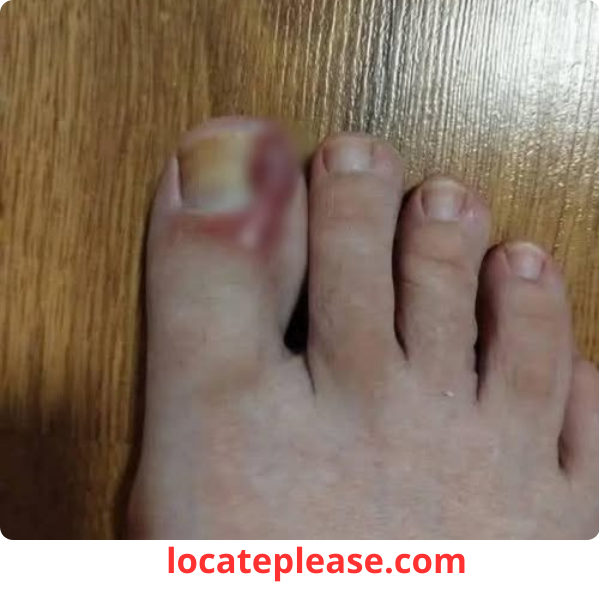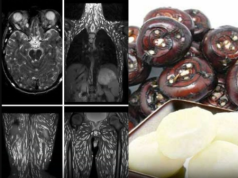An ingrown toenail is more than just a minor annoyance — it can turn every step into a sharp, throbbing pain.
It happens when the edge of your toenail — usually on the big toe — grows into the surrounding skin instead of over it. This causes:
- Pain and tenderness
- Redness and swelling
- Warmth and sensitivity
- In severe cases, pus or infection
While severe or recurring ingrown toenails require a doctor’s care, mild cases can often be treated at home with simple, natural remedies.
The key?
👉 Act early. Be consistent. Avoid infection.
Let’s walk through the causes, signs, and safe, effective home treatments to bring relief — and get your foot back on solid ground.
🦶 What Causes an Ingrown Toenail?
Several everyday habits and conditions can set the stage for an ingrown toenail:
- Tight or narrow shoes – Squeeze toes together, pushing nails into skin
- Improper nail trimming – Cutting nails too short or rounding the edges (instead of straight across)
- Toe injuries – Stubbing, dropping something, or repetitive pressure (like from running)
- Naturally curved or thick nails – Some people are genetically prone
- Poor foot hygiene – Moisture and bacteria increase infection risk
Even a small mistake in nail care can lead to days of discomfort — but the good news is, most early-stage cases can be reversed at home.
🔍 Signs You Have an Ingrown Toenail
Watch for these symptoms, especially on the sides of the big toe:
✅ Pain or tenderness when pressure is applied
✅ Redness and swelling around the nail
✅ Warmth in the area
✅ Fluid buildup or pus — a clear sign of infection
✅ Overgrowth of skin (called hypertrophic tissue) around the nail
If you see yellow or green pus, increasing redness, or spreading warmth, it may be infected — and you should see a doctor.
🏡 Home Treatments for Ingrown Toenails
1. Soak Your Foot in Warm Salt Water (Epsom Salt Soak)
This is the first and most effective step — it softens the skin, reduces inflammation, and helps draw out minor infection.
How to do it:
- Fill a basin with warm (not hot) water
- Add 1–2 tablespoons of Epsom salt
- Soak your foot for 15–20 minutes, 2–3 times a day
- Gently pat dry afterward
✅ Tip: Add a few drops of tea tree oil (antibacterial) for extra protection.
2. Gently Lift the Nail (After Soaking)
Once the skin is soft, you can help the nail grow above the skin instead of into it.
How to do it:
- After soaking, dry your foot
- Use a clean tweezer or orangewood stick to gently lift the ingrown edge
- Slide a tiny piece of cotton, dental floss, or gauze under the nail to keep it elevated
🛑 Never cut or dig into the nail — this can worsen the problem or cause infection.
Replace the cotton daily and keep the area clean.
3. Apply an Antiseptic and Keep It Covered
Protect the area from bacteria and irritation.
Steps:
- Dab the area with hydrogen peroxide or diluted tea tree oil
- Apply a thin layer of antibiotic ointment (like Neosporin)
- Cover with a bandage or adhesive strip
Change the dressing daily — or more often if it gets wet or dirty.
4. Wear Comfortable, Open-Toed Shoes
Give your toe room to breathe and heal.
✅ Choose:
- Wide-toe box shoes
- Sandals or open-toed footwear
- Soft, breathable socks
Avoid tight shoes or high heels until fully healed.
5. Use Natural Anti-Inflammatory Remedies
These can help reduce pain and swelling:
- Tea bag compress: Soak a black tea bag in warm water, then apply to the toe. Tannins help reduce swelling.
- Turmeric paste: Mix turmeric with water or coconut oil and apply — its anti-inflammatory properties can speed healing.
- Garlic: Known for its natural antibiotic effects. Crush a clove, apply to the area (wrap with a bandage), and remove after 30 minutes.
✅ Prevention: Keep Ingrown Toenails Away for Good
Once healed, protect your feet with these habits:
- ✂️ Cut toenails straight across — never rounded or too short
- 👟 Wear properly fitting shoes — wide enough for toes to move freely
- 🧼 Wash and dry feet daily — especially between the toes
- 🧴 Moisturize to prevent cracked skin and nail splitting
- 🩺 Inspect your feet regularly — especially if you have diabetes or poor circulation
🚨 When to See a Doctor
Home care works for early-stage ingrown toenails, but seek medical help if you have:
- Signs of infection (pus, fever, spreading redness)
- No improvement after 2–3 days of home treatment
- Diabetes or poor circulation — even mild ingrown nails can lead to serious complications
- Recurring ingrown toenails — you may need a minor procedure to prevent regrowth
A podiatrist can safely remove the ingrown portion or, in chronic cases, partially destroy the nail root to prevent regrowth.
💡 Final Thoughts: Heal Smart, Prevent Future Pain
An ingrown toenail doesn’t have to mean a trip to the doctor — if you catch it early.
With warm soaks, gentle lifting, and proper care, most mild cases resolve within a few days.
But more than treatment, prevention is key.
Your feet carry you every day.
Treat them with care — from the shoes you wear to the way you trim your nails.
Because sometimes, the smallest change can prevent the biggest pain.
Listen to your feet. They’re telling you how to heal.










